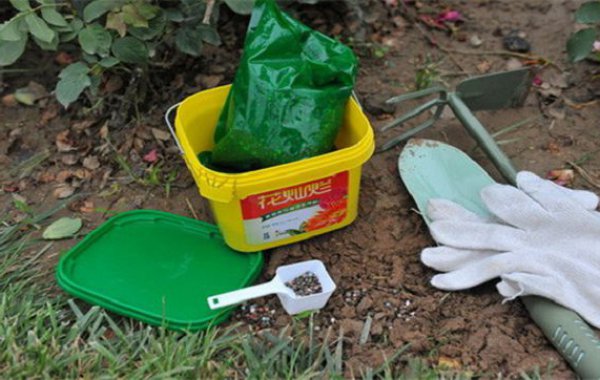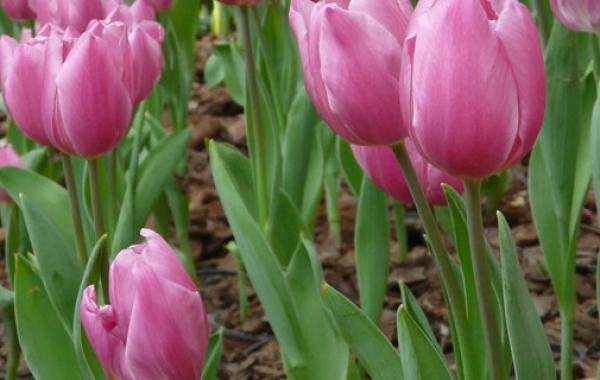Acid and alkali damage of flowers and its control
1. Soil pH affects nutrient availability.
Soil pH affects the solubility of mineral salts, thus affecting the availability of nutrients. When the soil pH value is 6-7, it is most beneficial for plants to absorb and utilize nutrients. In strong alkaline soil, elements such as iron, boron, copper, manganese and zinc are easily fixed. In this soil, acidophilic flowers and plants, such as camellia, rhododendron, gardenia, etc., will yellowing leaves and poor growth due to iron deficiency. In calcareous soil of pH7.5, the content of available phosphorus decreased due to the combination of phosphorus and calcium. In acidic soil, it is easy to cause the lack of phosphorus, potassium, calcium, magnesium and other elements, and rainy areas will also lack boron, zinc, copper and other trace elements, so it is extremely disadvantageous to plant growth. Soil pH can also affect the activity of soil microorganisms and the role of humus, thus affecting the availability of nutrients and the normal growth of flowers.
Second, the adjustment of soil pH.
1. Reduce soil acidity
The application of quicklime, depending on the acidity of the soil, is 20ml 50kg per mu.
two。 Reduce soil alkalinity
(1) applying sulfur powder. Depending on the alkalinity of the soil, the application amount should be 1kg / 100 square meters.
(2) applying aluminum sulfate (alum). If the pH value needs to be reduced from 7 to 6, 0.5kg aluminum sulfate can be applied for every 100m2.
(3) watering alum and fertile water. The effect of watering alum fertilizer is better for flowers in acid-loving soil. For the preparation of alum fertilizer and water, generally use ferrous sulfate 3kg, oil meal or soybean cake 5ml 6kg, human feces and urine 10ml 15kg, water 200Mel 250kg, put them in a large tank, expose them in the sun for 20ml for 30 days, add water to dilute them after ripening.
(4) applying rotten fertilizer. There is more humic acid in humic fertilizer, which can adjust the acidity and alkalinity of soil and transform it to neutral.
Among the above methods, the application of sulfur powder is the most lasting, but the effect is slow, so it is necessary to supplement phosphate fertilizer when applying aluminum sulfate. Alum fertilizer and water has a quick effect, but the action time is short, so it needs to be applied frequently.
III. Prevention and control of acid and alkali damage to flowers
1. Prevention and control of acid damage to flowers
In the process of flower growth, the roots continue to secrete acid, or long-term application of acidic or physiologically acidic fertilizers (ammonium sulfate, ammonium chloride) to acidify the soil. For neutral or slightly alkaline flowers, such as excessive soil acidity, it is easy to cause acid damage, hinder root growth and poor aboveground growth. Alkaline fertilizers such as lime, limestone powder and plant ash can be applied to reduce soil acidity. Plant ash is the best potash fertilizer with the application amount of 50 Mu 100kg per mu.
two。 Prevention and control of alkali damage to flowers
Camellia, gardenia, cyclamen, begonia, rhododendron, magnolia, etc., for acid-loving flowers, as a result of long-term growth in the acidic soil environment, more suitable for high-iron, high-aluminum and low-salt soil conditions, once planted in slightly alkaline and calcareous soil, or long-term irrigation of calcium, magnesium more water, pH value of 78.5, when phosphoric acid reacts with calcium to form a variety of insoluble calcium phosphate, reducing the availability of phosphorus. At the same time, iron, manganese, copper, zinc and boron plasma can form hydroxide precipitation, which reduces the solubility, which is not conducive to the absorption of these elements by plants, resulting in the symptoms of element deficiency.
When acidic flowers are cultivated in alkaline or slightly alkaline soil, the soil and irrigation water must be improved. For open-field flowers, generally, 0.25kg sulfur powder or 1.5kg ferrous sulfate is applied every 10 square meters, which can reduce the pH value by 0.5 per cent (for clayey soil, increase the application rate by 30 per cent). For potted flowers, one part of river mud, one part of rotten leaf soil and one part of coarse sand can be used in a mixture of 0.5ml 1.0g sulfur powder or 1.5ml 2.0g ferrous sulfate per kg of soil, mixed and stacked for 2 weeks. If the flowers are watered with water containing calcium and magnesium, in order to prevent alkalization, 0.2% ferrous sulfate solution can be used to water regularly. Apply acidic or physiologically acidic fertilizers such as potassium nitrate, ammonium nitrate and calcium superphosphate to acidic flowers, and avoid alkaline fertilizers such as iron bicarbonate.
Related
- What if the leaves of potted flowers turn yellow?
- Florescence Control of several Flowers
- Anti-freezing technology and post-freezing nursing technology of flowers
- What is the classification of flowers? What are the common methods of flower classification?
- Prevention and control of alkali and acid damage of flowers in courtyard
- Technology of Anti-freezing and restoring growth of Flower seedlings in greenhouse and greenhouse
- How does flower fertilization not hurt the root? Fertilization technology of flowers
- Key points of disinfection in flower greenhouse
- Several pesticides that are banned or used cautiously in flowers
- How to fertilize the flowers that watch the leaves?



